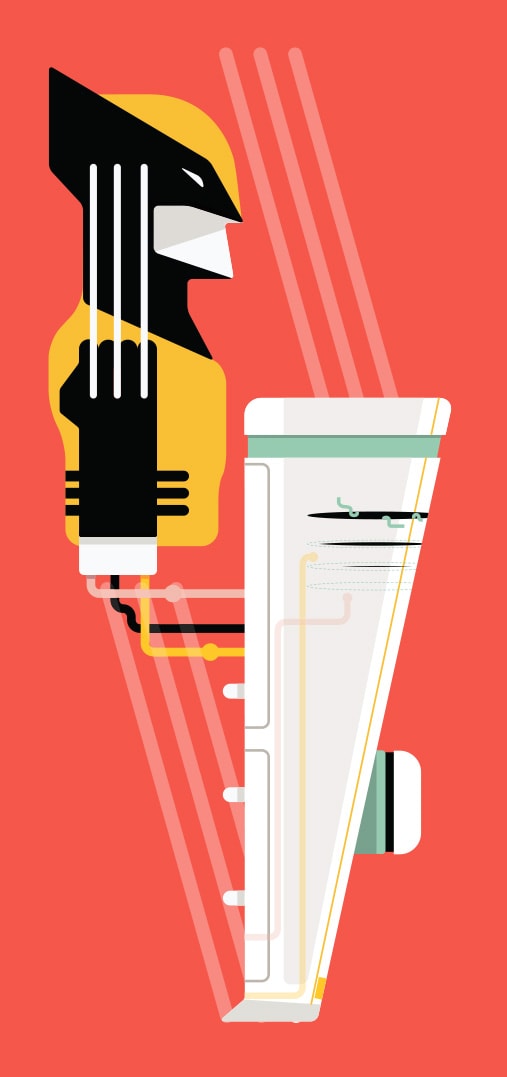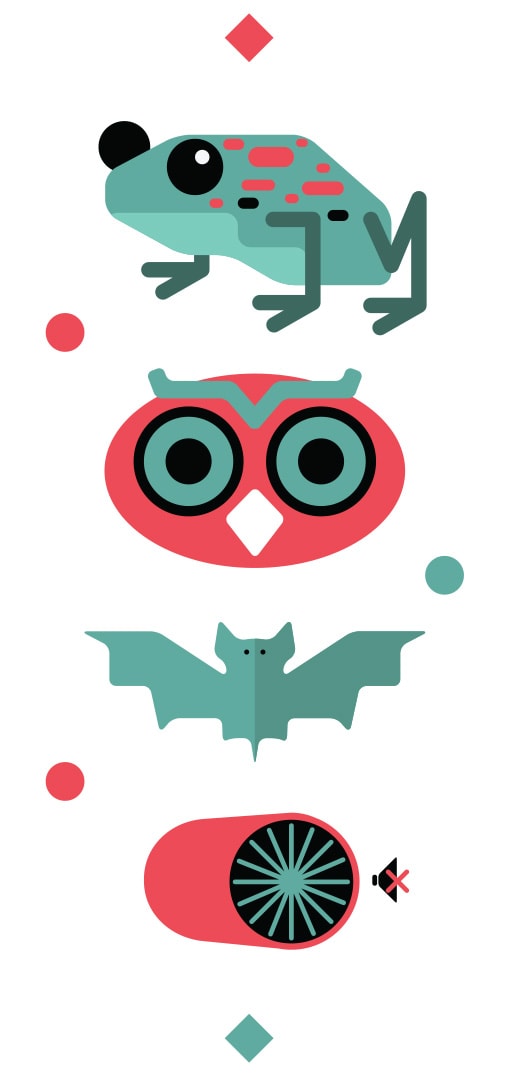Monkey See, Monkey Do
Share

This article is an excerpt from “One Good Idea Deserves Another,” originally published in the Innovation Issue of APEX Experience magazine.
APEX Insight: What do rainforest creatures, Uber, smart glasses and the aerospace industry have in common? A few really good ideas. This multipart feature looks at the power of industrious thinking, and how invention migrates from one industry to the next.
Wings Like Wo'(lverine)
BIOLOGY > AIRCRAFT > CONSTRUCTION
Say you slice your finger while julienning carrots. Blood wells up and spills from the cut, but you know the wound will most likely scab over and heal itself in just a few days. The self-healing process often occurs unnoticed beneath a bandage, but professor Duncan Wass and his team at the University of Bristol are ripping off the bandage for a closer look at the possibilities of self-healing technology in other applications.
“Catalysis” is the scientific word to describe the acceleration of a chemical reaction through the introduction of another substance – and it’s Wass’ field of expertise. Catalysis plays a big role in the production of industrial chemicals such as fuels, polymers and the carbon fiber composites used in aircraft wings.
Aircraft exteriors endure corrosion, paint chips and small dents over time. But, filled with a liquid healing agent that oozes out and hardens upon contact with a catalyst, airplane wings could heal themselves mid-flight, melding tiny cracks – much like Wolverine’s bionic skin fleshing in a gash mid-fight. “Our technology would enable you to maybe extend the maintenance schedule or use less material without compromising safety,” Wass explains.
The technology may also lead to bike frames, nail varnish and device screen glass self-healing in front of our very eyes. Automatic repair methods could also conceivably be applied to concrete so that sidewalks, roads and buildings would heal their own cracks – potentially saving cities a bundle on maintenance repairs.
 Monkey See, Monkey Do
Monkey See, Monkey Do
BIOLOGY > AVIATION
In 2009, Boeing sent three of its engineers on a weeklong expedition in a Costa Rican rainforest to search for a solution that could dampen jet engine noise. They pondered on cicadas, leaf-cutting ants, spiders, pistol shrimp and howler monkeys – species that rely on noise vibration for survival.
Biomimicry – literally, mimicking biology – has informed human innovation and design for decades. Most recently, it’s been owls, bats and poisonous dart frogs that have piqued the interest of aviation engineers. How? The down skirting of owls’ wings that muffles their movement and allows them to silently stalk their prey inspired the fan blades of a wind turbine, enabling engineers to reduce noise levels by 10 decibels.
Bats, marveled at for their ability to maneuver with ease, were researched to enhance aircraft agility. And the poisonous dart frog’s defense mechanism to secrete toxins has inspired an airplane coating that deposits antifreeze, reducing delays caused by de-icing.
Biomimicry also influenced Airbus’ Concept Cabin for 2050: Its airframe was inspired by the porous skeleton of birds, its membrane walls fade in and out to let in light and its self-cleaning seats mold to a passenger’s body – all of which are reminiscent of a living environment. And an even more explicit display of drawing from nature is Airbus’ Beluga XL cargo plane that is literally shaped like the whale in its moniker.


